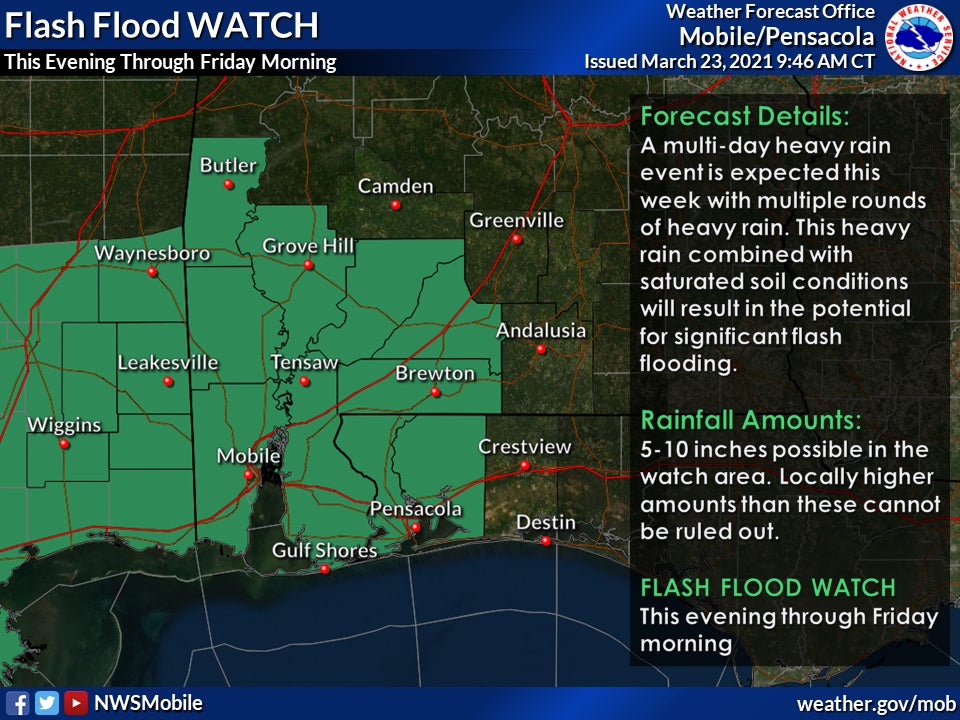Forgotten Trails: Visit with author stirs memories
Published 2:29 pm Wednesday, April 18, 2007
By Staff
I was one of many who braved the bad weather on Saturday to go to the library to hear Kathryn Tucker Windham, the master storyteller. If you have never attended one of her entertaining talks, you have missed a real treat. Her whole life seems to have given her material to talk about and she does it so well.
Most people know her for her “Thirteen Ghosts” stories that she has written. She did tell one ghost story and mentioned one that I grew up with. It was in the “Thirteen Ghosts of Alabama” and gave the account of Bill Sketo, who was hanged in Dale County during the Civil War. Bill was serving the Confederacy when he got word that his wife was gravely ill. He hired a “substitute” to fight in his place and he came home to see about his wife. It was a time of extreme hardship in Dale County. Deserters were roaming the countryside and some people got the idea that Bill had deserted his post. They quickly took Bill and proceeded to hang him. They found a tree and put the noose around Bill's neck. They gave him a chance to say something and were very angry when he began to pray for his tormentors. In fact they were so mad they kicked his support out from under him so that he would hang. The tree limb bent farther than they expected and Bill's toes would still touch the ground. Mr. Echols took his cane and quickly dug the dirt out so that Bill would hang free. Sometime later that afternoon some others came along, took Bill down and he was given a proper burial in Mt. Carmel Cemetery near Echo. One of those who cut him down and carried him home was my great-great-grandfather, David Young. The story goes that the hole that had been dug for Bill to hang will not stay full. It was filled many times, but every time it would be empty afterwards.
I heard this story many times while I was growing up. I even knew where the tree was and saw it many times near Newton. Several years ago I asked my brother about it and he told me the new bridge over the Choctawhatchee had gone right over the hole. In fact one of the bridge pillars was right where the hole had been. There had been quite a discussion by those that knew the story when the bridge was built. Many thought the bridge was going to make Bill's ghost mad.
This is one of the stories that Mrs. Windham told. Others are funny and entertaining, or both. For instance, did you know that you could tell the future by the number of buzzards you see? One is for sorrow, two is for joy, three is for a letter , four is for a boy, five is for silver, six is for gold, seven is for secrets that have never been told.
So count the buzzards you see today and you will know just what your day will be like. And if you are afraid at night, you should put your shoes under your bed, one toe pointed out and one toe pointed in. Mrs. Windham assured us all that if we did that we would not be afraid. She also told us of the “Rabbit Club” where on the first day of the month, you should, before setting foot on the floor, shout out “rabbit, rabbit” and you will have good luck the whole month.
I believe Mrs. Windham's whole point in telling stories is to encourage others to do the same. She is 89 years old and tells things out of her own past that are entertaining. She has the art of telling them and that is a rare thing. I can recall in my own childhood a couple of men who were master storytellers. One was the grandfather of my best friend. He had specific characters that did all sorts of things in his stories. Another storyteller was an old man who lived down the road. Mr. Wainwright Conner could tell some good ones. They were always so far-fetched that you knew they weren't true.
You, like me, have stories you can pass along to the youngsters of today. Turn off the television and tell the stories. I have found that ordinary happenings make for a good story.
I remember telling my child of the time I lived in the jail. Before I knew it he had rounded up his friends and they were standing there waiting for me to tell the story. There was a simple reason why I lived in the jail, but to them it was just a good tale.
And, by the way, I guess I should tell you why I lived there lest you think I am a jailbird.
My family moved to another town when I was in the tenth grade. I was going to school in Ozark and did not want to leave in the middle of a semester. My great-uncle, Ralph Skipper, was a deputy sheriff (his son would later be sheriff of Dale County). At that time the jail was located in downtown Ozark. I mean it was just off of the courthouse square. A deal was struck between my mother and Uncle Ralph. I would stay with him and Aunt Ethel for the rest of the semester.
Now, the jail was surrounded by a tall metal fence. Thinking back on it, I believe it was a very pretty fence. Once you entered from the sidewalk, you found yourself in an entry, where to the left were the living quarters for the jailor and to the right was the cell for the women inmates. The men inmates were kept upstairs.
Now there was a back cell that had been converted into an extra bedroom for the jailor's family and that became my bedroom while I was there. I never thought too much about this experience, but it was a cause of excitement for the neighborhood children later on here in Brewton. I remember it as being just great. I never worried about anyone breaking in because I had an iron door and bars on my windows.
In fact I like it very much, because once I walked out the front gate, which was often left open in those days, I was in downtown Ozark and could walk around the corner to shop or go to the movies.
Take it from me, and Kathryn Tucker Windham, and tell your stories before they are lost to the ages. One day your children will thank you for it.
Happy hunting.




